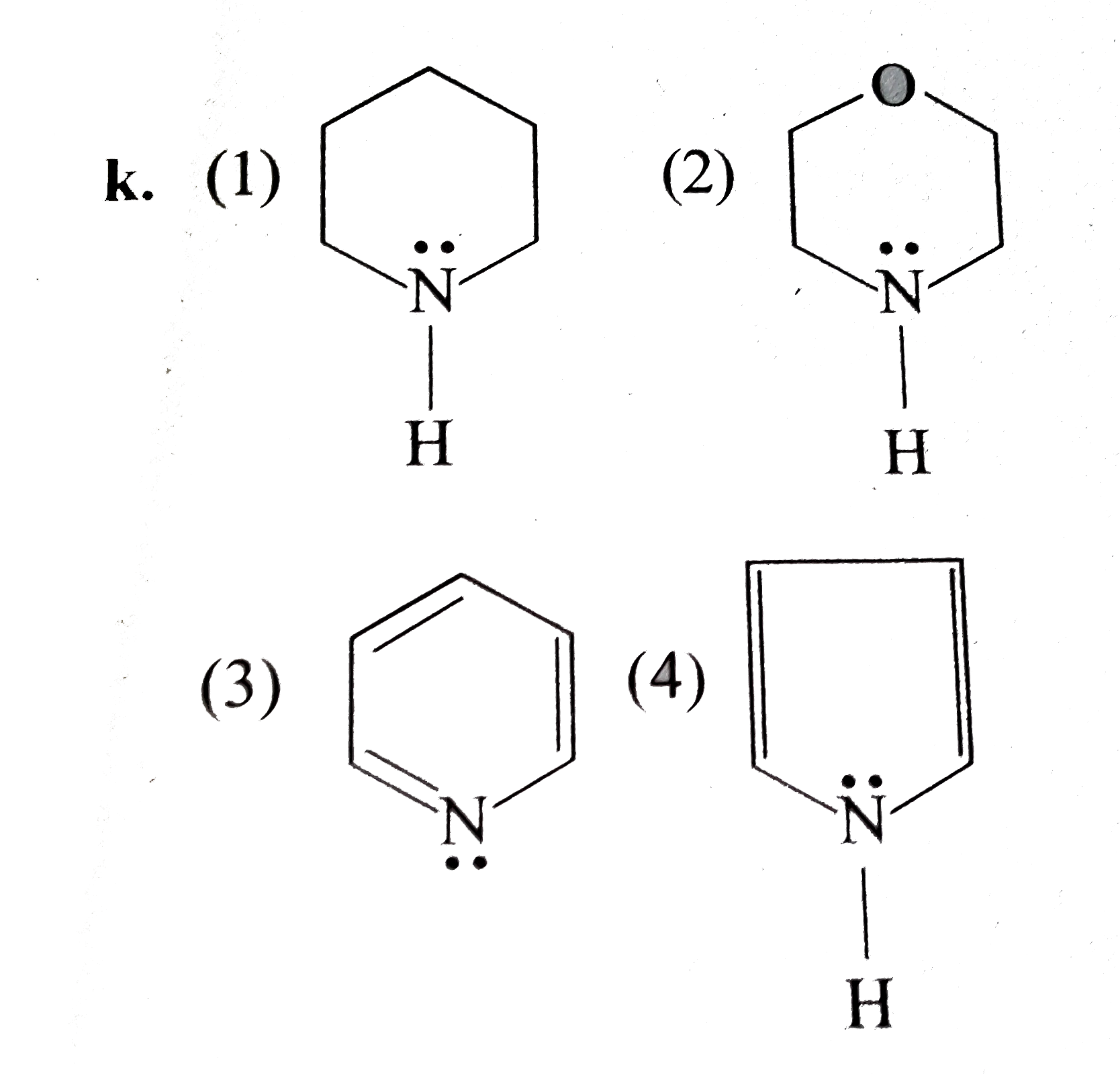Categorise the following molecules/ions ad nucleophile or electrophile.
(1)
(2)
(3)
(4)
(5)
(6)
(7)
(8) .
Nucleophiles:
These species have unshared pair of electrons, which can be donated and shared with an electrophile.
Electrophiles: .
Reactive sites have only six valence electrons, can accept electron pair from a nucleophile.
Topper's Solved these Questions
- BOOK - NCERTCHAPTER - ORGANIC CHEMISTRY- SOME BASIC PRINCIPLES AND TECHNIQUESEXERCISE - EXERCISE40videos
ORGANIC CHEMISTRY- SOME BASIC PRINCIPLES AND TECHNIQUES
- BOOK - NCERTCHAPTER - HYDROGENEXERCISE - EXERCISE36videos
HYDROGEN
- BOOK - NCERTCHAPTER - REDOX REACTIONSEXERCISE - EXERCISE30videos
REDOX REACTIONS
Similar Questions
Knowledge Check
- Question 1 - Select One
The decreasing nucleophilicity of the following is :
(I) CH3SӨ
(II) CH3OӨ
(III) ӨOH
(IV) EtOӨ.AIV>III>II>IBI>II>III>IVCIV>III>I>IIDII>I>III>IV - Question 2 - Select One
The decreasing order of nucleophilicities of the following is :
(I) BrӨ
(II) MeOӨ
(III) Me2NӨ
(IV) Me3CӨ.A(I)>(II)>(III)>(IV)B(IV)>(III)>(II)>(I)C(IV)>(III)>(I)>(II)D(II)>(I)>(III)>(IV)
The correct order of stabilities of the following resonance structures is :
(I) H2C=⊕N=ӨN
(II) H2⊕C−N=ӨN
(III) H2ӨC−⊕N≡N
(IV) H2ӨC−N=⊕N.View SolutionOf the following pairs, which one is the stronger base and stronger nucleophile ?
(a) (I) MeOӨ, (II) MeOH
(b) (III) ӨOH, (IV) ӨCN
(c) (V) H2O, (VI) ӨOH
(d) (VII) ӨNH2, (VIII) NH3.View SolutionClassify the reagents shown in bonds in the following equations as nucleophilies or electrophiles. Use curved-arrow notation to show the electron movement.
(a) CH3COOH+HOӨ→CH3COOӨ+H2O
(b) CH3COCH3+NCӨ→CH3C(CN)OHCH3
( c) C6H6+CH3⊕CO→C6H5COCH3.View SolutionExplain why (CH3)3C⊕ is more stable than CH3⊕CH2 and ⊕CH3 is less stable.
View SolutionClassify the following species as
(a) nuclephile,
(b) electrophile,
( c) both, or
(d) neither.
(1) ⊕NO2
(2) RCH=0
(3) H2
(4) SnF4
(5) R−C≡..N
(6) CH4
(6) Cr4
(7) Cr3
(8) BeF2
(9) ..NH3
(10) IӨ
(11) RCOOӨ
(12) C2H5OӨ
(13) BC13
(14) Br⊕
(15) Br2C:
(16) SiC14
(17) Me3..P
(18) Me2CH⊕
(19) CH2=CH4
(20) HC1
(21) Me3C..Ө.View SolutionArrange the following in the order of decreasing basic character :
(a) (1) CH3NH2
(2) (CH3)2NH
(3) C6H5NH2
NH3
(b) (1) CH3NH2
(2) (CH3)2NH
(3) CH3)3N
(4) C6H5NH2
( c) (1) NH3
(2) CH3NH2
(3) C6H5NH2
(4) (C6H5)2NH
(5) (C6H5)3N
(d) (1) C6H5NH2
(2) p−NO2C6H4NH2
(3) m−NO2C6H4NH2
(4) p−CH3OC6H4NH2
( e) (1) p−Toluidine
(2) N,N−Dimethy1-p-toluidine
(3) p−Nitroaniline
(4) Aniline
(f) (1) Methulamine
(2) Dimethylamine
(3) Aniline
(4) N−Methylaniline
(g) (1) RCN
(2) RNH2
(3) RN=CHR
(h) (1) C2H5NH2
(2) (iso−C3H7)3N
(3) CH3CONH2
(4) CH3ӨNHNa⊕
(i) (1) ӨNH2
(2) HC≡CӨ
(3) .ӨOH
(4) .ӨOR
(5) RӨ
(6) RCOOӨ
(j) (1) HӨ
(2) C1Ө
(3) NHӨ2
(4) RCOOӨ
(5) ROӨ
 .View Solution
.View Solution

